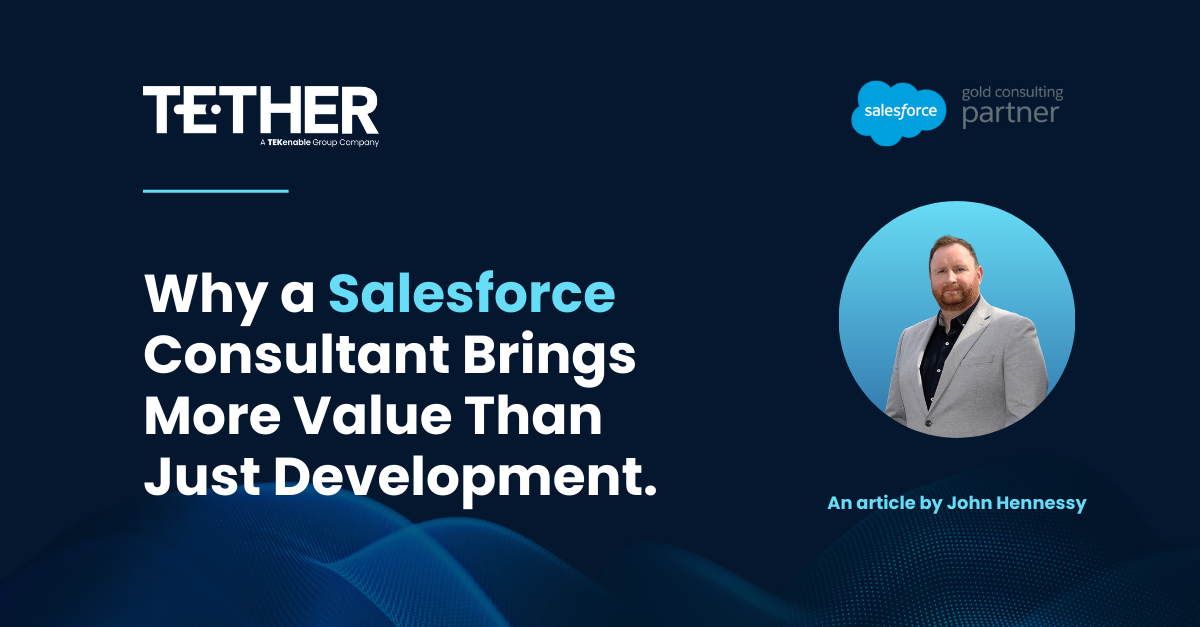When choosing software to power your business, one of the most common dilemmas is whether to go for an off-the-shelf solution or invest in a custom-built application.
Both options have their merits, and the right choice will depend on your business needs, goals, and resources. However, as businesses strive for flexibility, scalability, and speed, more organisations are realising the advantages of off-the-shelf software that can be customised to fit their unique requirements.
From my years working in IT, this is a conversation I’ve had countless times: should you buy off-the-shelf software or build a custom solution from scratch? Both approaches have their pros and cons, but I’ve found that platforms like Salesforce offer the best of both worlds—ready-to-use features combined with the flexibility to customise it for your unique needs.
The Case for Custom Builds
Custom-built software is exactly what it sounds like: a solution designed from the ground up to meet your specific requirements. It’s built for your business processes, integrates seamlessly with existing systems, and can provide a sense of exclusivity. But while custom software has its advantages, it comes with significant challenges that can make it less practical for many businesses.
What are the Advantages of custom build software?
Tailored to your needs
Custom software can be developed to address your unique business processes, providing exactly the functionality you need without compromise.
Full control
Competitive advantage
What are the challenges of custom build software?
High cost
Long development time
Maintenance and upgrades
Scalability risks
For some organisations, particularly those with highly specific needs and deep pockets, custom software might seem like the best fit. But for most businesses, the drawbacks of cost, time, and maintenance make it a less attractive option.
The Case for Off-the-Shelf Solutions
Off-the-shelf software offers pre-built functionality designed to address common business needs. Solutions like Salesforce are built with decades of best practices and innovation, making them reliable and feature-rich right out of the box. The real beauty of off-the-shelf solutions, however, lies in their ability to be customised to suit your business processes without the need for full-scale development.
What are the Advantages of Off-the-shell solutions?:
Faster implementation
Lower upfront costs
Built-in scalability
Continuous innovation
Robust support ecosystem
what are the Challenges of Off-the-shell solutions?:
Initial customisation needed
Off-the-shelf solutions often require some configuration or customisation to align with your processes. However, platforms like Salesforce make this easy with low-code tools and pre-built integrations.
Subscription costs
The Salesforce Advantage: Off-the-Shelf with Customisation
For businesses that want the best of both worlds, Salesforce offers an ideal solution. As a powerful off-the-shelf platform, it comes with all the features you need to get started quickly, while its customisation capabilities ensure it can adapt to your unique requirements.

Customisation Without Complexity
Salesforce allows businesses to customise workflows, user interfaces, and functionality through its intuitive low-code tools like Flow Builder and App Builder. Need more advanced functionality? Salesforce supports integrations with third-party systems and custom development using Apex and MuleSoft APIs. This means you can tailor the platform to fit your business without the heavy lifting of building software from scratch.

Built-In Scalability
Whether you’re a startup or an enterprise, Salesforce scales effortlessly as your needs evolve. From adding new users to expanding into global markets, Salesforce’s infrastructure supports your growth every step of the way.

Time to Value
Unlike custom builds that can take years to develop, Salesforce can be up and running in a matter of weeks. With pre-built templates, AppExchange integrations, and expert support, you’ll see a faster return on investment.
AI and Automation
Salesforce takes things a step further with built-in Einstein AI, enabling predictive insights, automated workflows, and data-driven decision-making. These tools not only improve efficiency but also give your business a competitive edge.
Making the Right Choice for Your Business
The decision between off-the-shelf and custom-built software ultimately comes down to your business’s specific needs and resources. While custom builds might appeal to organisations with highly unique requirements, the costs, risks, and time involved can make them less practical for most.
Off-the-shelf platforms like Salesforce provide the flexibility, scalability, and speed needed to thrive in today’s competitive landscape. With the ability to customise and extend the platform, businesses can enjoy all the benefits of bespoke functionality without the drawbacks of custom development.
If you’re considering your next software investment, let us help you explore how Salesforce can transform your business. At Tether, we specialise in tailoring Salesforce to meet the needs of organisations across industries, ensuring you get the best value from your investment.
When it comes to software, you don’t have to choose between flexibility and practicality. With Salesforce, you get a robust, scalable platform that adapts to your business’s unique needs—delivering results faster and more cost-effectively than a custom build ever could.
FAQ’s
1. What are the main advantages of off-the-shelf software like Salesforce?
A: Off-the-shelf software like Salesforce offers faster implementation, lower upfront costs, built-in scalability, continuous innovation, and a robust support ecosystem. It provides ready-to-use features and the flexibility to customise, making it a practical choice for many businesses.
2. Why might a business choose custom-built software over off-the-shelf solutions?
A: Custom-built software is tailored to specific business needs, offering full control and a competitive advantage. It integrates seamlessly with existing systems and can provide unique functionality. However, it comes with high costs, long development times, and ongoing maintenance challenges.
3. What are the challenges associated with custom-built software?
A: Custom-built software requires significant investment, long development times, and dedicated resources for maintenance and upgrades. It also faces scalability risks as businesses grow, often requiring costly redevelopment to accommodate new processes, users, or geographies.
4. How does Salesforce ensure scalability for growing businesses?
A: Salesforce is designed to scale with your business, whether adding new users, regions, or functions. Its cloud-based infrastructure handles growth seamlessly, connecting systems and automating processes. Ongoing research and development ensure scalability with features like AI insights and advanced analytics.
5. What makes off-the-shelf software like Salesforce a cost-effective option?
A: Off-the-shelf software avoids the high development costs of custom builds. Platforms like Salesforce have already had significant investments in research, development, and testing, providing businesses with a proven, ready-to-use solution. Updates and security improvements are managed by the vendor, saving further costs.




